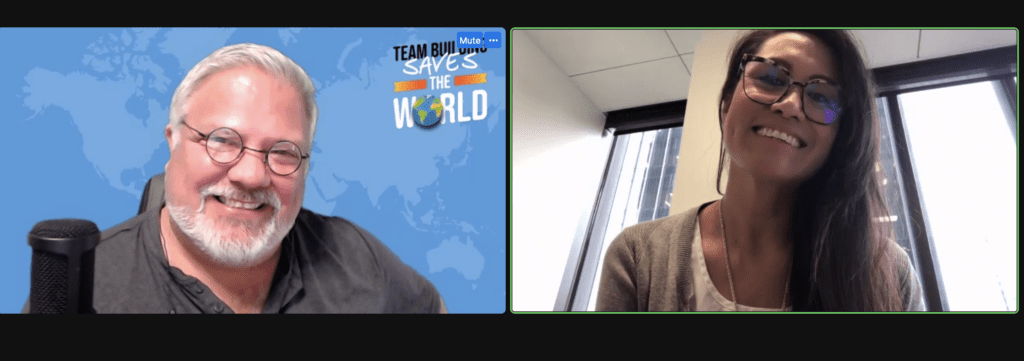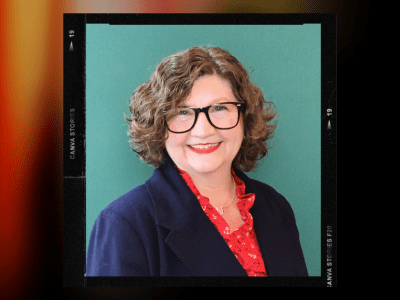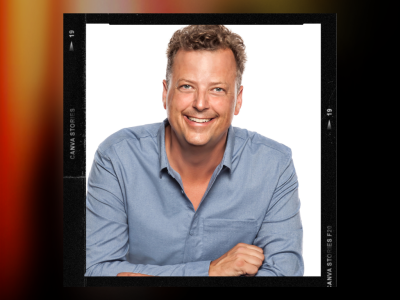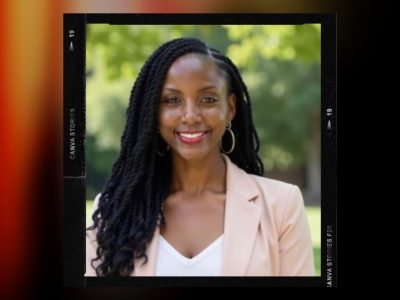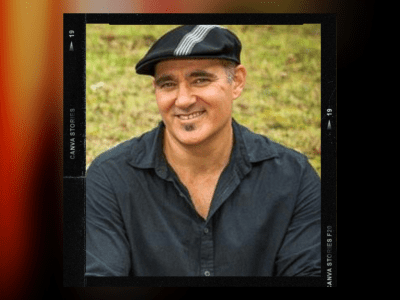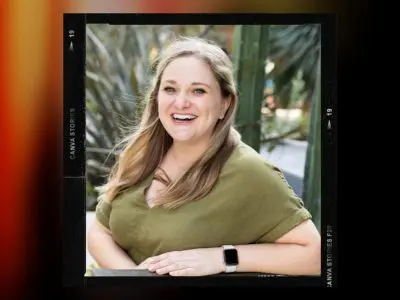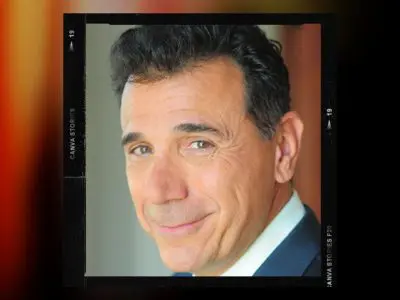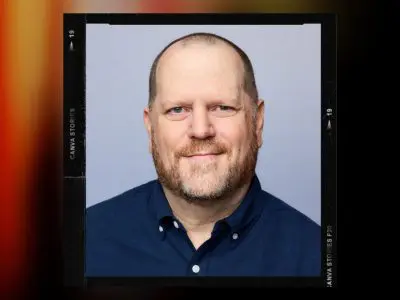Creating an Accessible Workplace
w/Naomi Panarella
Use the buttons above to listen now.
Transcript - Creating an Accessible Workplace
Rich: On this episode of Team Building Saves the World. I was amazed to find out how much I didn’t know. So, and I, and I, I’m ashamed to even have to say that
Naomi: they may be a little bit, a tiny bit fearful of how do we approach this because we don’t know. We’re just asking you to do every day, you know, normal things that you take for granted, right?
I’m helpless, right? But I’m actually not. And this bad boy parts the seas like nobody’s business. I love Willie Now.
Rich: Hello team. It’s me, your old friend Rich Rininsland host of team building saves the world, the show where I speak to the leaders and innovators in employee wellness and corporate culture on how it reflects in the world of today. And today, we’re discussing accessibility in the workplace with lead facilitator for beyond our site, Naomi Panarella.
But first, I need to share some love with the rest of my supporters at Team Bonding. If your team is ready to experience teamwork through the power of play to visit team bonding.com to learn more now, team, join me in welcoming my guest for today, the 2021 winner of the Be My Eyes Organization’s, Miss Blind Diva, Naomi Panarella.
Uh, Naomi, welcome. That is a small collection of people I keep trained up under my desk. They’re here just to applaud you. That’s their job. How are you today?
Naomi: I am doing so well today for Monday Astros, won last night. I am coming to you from Houston, Texas, so I thought I’d throw that in there as well.
Rich: Congratulations to you and everybody else in Texas. .
Naomi: Thanks.
Rich: But yeah, while we’re there, let’s just start off nice and easy. Why don’t you tell my team out here about, uh, who you are and how it was that you got involved in this.
Naomi: Yeah, sure. So I work full time as an executive assistant for shocking, I know, prepare yourself for this. The Oil and gas industry.
Rich: Texas. Sure. .
Naomi: Outside of that, I’m oddly obsessed with travel culture, learning just about our world and everything inside of it. I’m a homeowner. I’m a pet parent. I’m just doing my thing down here in Texas.
Rich: How were you involved in accessibility?
Naomi: So I am visually impaired.
I have retinitis pigmentosa, which is a gradual loss of vision. So I do still have some vision. Um, I’m in a gray space, which is a funky space to be in because I’m between what I like to call the sighted and unsighted world. So, um, yeah, I’m here to champion for the visually impaired and blind community.
Rich: Fantastic. So let’s start off, because the, the amazing thing about this is as, when this came up as a topic for the actual podcast, I was amazed to find out how much I didn’t know because it, despite my glasses, it doesn’t affect me. So, and I, and I, I’m ashamed to even have to say. So let’s start off. Can we tell my team out there what it is we mean when we say workplace accessibility?
Naomi: I think most people understand kind of the norm things when you say workplace accessibility. For example, You know there are ramps in place for people that are wheelchair users, right? There’s signage that has braille for people that are visually impaired or blind, and that’s all great and all.
But technology has advanced so much that it now needs to include that for people with disabilities, meaning digital accessibility, uh, usage of a computer, a screen reader, um, accessible hyperlinks. Um, these are things that, you know, technology wise that need to be in place for individuals in the workforce that are necessary to do our jobs, for some of us.
Rich: What is the full breadth that we’re even talking about here? Because like you say, those are what everybody sees on the every day. Mm-hmm. . But we’re talking about how much of the world now is run on computers, you know?
Naomi: Right. So everyone is, um, I think also beyond. You know, just getting those types of things in place for people with disabilities, and I shy away from using that word.
I prefer to use different abilities, but we’ll, we’ll, we can use disabilities totally fine. You know, it’s, it’s educating your company. It’s, it’s sitting down with the management team and, and getting some kind of knowledge passed around or focus groups that are done. Just really to educate everyone so everyone understands and everyone feels
as if they are being included and there’s a diverse, you know, talent pool that a human resource can pull from. So it’s like, okay, hr, do you have your format in place for people who are visually impaired, um, that necessarily can’t read a regular form on a computer screen? And with the tools that are in place for people with a, a
visual impairments are blind. They have access to that, but it’s kind of like a circle, right? So like they have to have that in order for us to be able to compete in the workforce, to be hired, to be productive, um, and diverse.
Rich: Right. Because the, the biggest protections that the differently abled have come from the Americans with Disabilities Act.
Correct? That is correct. Right. Which actually states, as I, as I was researching, not only like I ignorantly thought that you just have the right to have a job. That they can stop from hiring you or fire you based upon a disability. But it also means that a corporation has to give the differently abled every advantage that they require in order to succeed and excel at a job.
Naomi: A hundred percent. We just need the playing field to be fair for everyone.
Rich: Right, Right. So this brought up an interesting question in my mind when it came to what’s the difference between the accessibility and the equity that someone would have, that someone would need, I mean are we seeing enough of companies nowadays actually reaching out and making certain that someone differently abled has the advantages they need to succeed?
Naomi: For me, personally, I, I don’t think it’s being done enough. I think we’re getting to that point slowly. Um, but it is starting to become, you know, something that is recognized. And I think for a lot of companies, they may be a little bit, a tiny bit fearful of how do we approach this because we don’t know who can we bring in to help educate us on how we need to cultivate a culture in our environment and in our company so that we are being equitable and, and diverse and inclusive.
And putting all the things that people with different abilities will need to compete alongside their other coworkers.
Rich: So what are some of the ways that they’re actually doing this? I mean, what are some of, what are some of the things that you’ve needed in the past that you didn’t have or, or had to ask for?
Naomi: Sure. So, like I said, I, I’m, I’m floating in between two worlds the sighted and unsighted because I do have some vision, but I don’t have enough to, to drive a vehicle or do a lot of other things. So initially I asked for lighting because of what I have, requires a tremendous amount of, uh, lighting and no issue,
brought me a little lamp. Um, I sat with it one day and just said, you know, I, I need to understand how can I navigate through my screens, cuz I’ve got two, I’ve got one for emails and one for calendars. And so they showed me a little system where I could color code. They went in and showed me how I could enlarge my cursor and add a tail to it.
Like just all kind of cool things. I thought, my gosh, I had no clue. They offered me, uh, an illuminated keyboard and said, If you need this, it’s here for you. And I said, No, I think I’m good for now, but if I get to a point where I do need that, good to know that you guys have that for me. Right. So that was really great, but that conversation came after I
informed, you know, my boss of my original impairment, which is a whole nother conversation, .
Rich: So they didn’t know when you were hired?
Naomi: Correct. And that was on me out of fear of being discriminated against.
Rich: Sure. Do you think that people, I mean, is that still, is it still so Stig stigmatic that people are faking their way through?
I don’t, I’m sorry. I don’t mean to use the word faking at all, but people are hiding that side of themselves in the interview process.
Naomi: Sure, I know lots of people, um, that don’t disclose that I, I, to be honest, I didn’t disclose it initially. And, you know, within an application, there is questions along that path of, you know, do you have this?
And you’re so fearful to say yes because you think, Oh my gosh, they’re not gonna hire me. I won’t even get in front and get an interview, let alone, you know, So it’s just like, let’s just make everything easier for both parties. And just kind of go around that question and then once I’m hired, then we can have that discussion.
And it’s so sad that I have to admit to that. But I am not the only person that has a story like that unfortunately.
Rich: Can I just say thank you for even just sharing this information with us, by the way?
Naomi: Absolutely. .
Rich: It’s, it’s a remarkable to have somebody who’s willing to be so open and honest about it now.
Thank you.
Naomi: Yes, absolutely.
Rich: Do you still find that fear occasionally coming up like the, that. , your ability to succeed as far as you can go in business could actually be hampered.
Naomi: Yes, I do. Uh, but like I said, I, I had a very open discussion with my boss and you know, sometimes it really is just the luck of the draw Rich.
Like you will get in front of someone who is like, My gosh, I had no idea. Thanks for sharing. How can we help? How do we make sure that you’re safe? What, what do you need? Versus some people that kind of like, Oh, okay, thanks for sharing. And that’s, that’s kind of it. Yeah. And then you feel like, Oh, oh no, what did I just do?
Rich: So why is this so important? I mean, as much as it seems ridiculous to even ask that question as a company, why is making certain that this accessibility is there even an important topic?
Naomi: I think it’s important because it allows companies to broaden the talent pool that’s out there. So many people dismiss people with disabilities just solely based on that, and that’s it, right?
We’re not even talking, having a conversation. They just. See what they see, unfortunately call a judgment, and then it, it’s, it’s, it’s done. So I think it’s important for, for those reasons, there’s so much advancement in technology and I know a few companies that specifically work with people that have different abilities.
And they are engineers, software programmers. And some people are just so astonished by that. And I’m thinking, I don’t why, I mean, we’re, we’re not aliens from another planet, by no means, right? We’ve just never been given the opportunity or you’ve never been educated on this particular community. Right?
Right. So it’s a combination of that, and I think if all that came to the surface as a discussion and everyone’s involved. I mean, Hello
Rich: No, you’re exactly right. Cause I mean, especially nowadays, we’re still coming out of the, of the pandemic. Uh, the world is so very, very different now. Um, I can only imagine what kind of, are you working in person, hybrid or are you back in the office?
Naomi: my company, um, is in the office every day.
Rich: Okay.
Naomi: It’s up to the different department heads to decide if, you know, a particular individual needs to work remote for certain reasons.
But it’s funny that you mentioned the Covid because as a, as a person with a different ability, we are very tactile people. And that, that was like the number one thing in Covid, like, don’t touch this, don’t touch that. It’s like, but wait. That’s kinda how I see. So ,
Rich: were you working at home during the actual, during the lockdown itself, how did, what did you have to go through?
What kind of changes did that force for you?
Naomi: Uh, so I needed to just make some minor adjustments, not too, too many for, for myself. Um, I think as a whole, our company never let anything drop through the cracks. And I think for me personally, I, I already double, triple check any, any and everything I send out, uh, just because I wanna ensure that I’m not making any mistakes.
But when I was at home, I was doing it like six or seven times. Like I had ocd, like looking over and over and over and over and making sure, because I just thought, okay, I’m in a different environment. Yeah. It’s not my normal work environment, so I just wanna really ensure I’m performing the way I need to be performing.
Rich: And this is, I mean, it’s, it’s fairly standardized. Wouldn’t you think that?
Oh yeah.
Because that’s why, that’s why I always, as soon as people started coming up with a term, uh, differently abled, I latched onto it. I love that terminology because I grew up in the era of the disabled were the disabled. Right.
And, but now it’s like, no, everybody has something about them. My knees are horrendous. If the buildings didn’t have an elevator, I’d never be able to get anywhere. Plus, you’re talking about differently abled. Also, now we starting to grow to include mental health.
Naomi: Yes.
Rich: Into that you have people with fibromyalgia for whom pain, pain is an everyday occurrence.
Yep. All of these things are now covered and they should.
Naomi: They should be. Yes, they absolutely should be.
Rich: So we’re still looking at, we’re still looking at a world that is suffering from the great resignation according to, according to corporate research. And yet last year’s census shows that in the United States alone, I have here the, the statistics.
There’s 33 million people with disabilities between the ages of 16 and 64. And in that group, fewer than 56% are actually currently. Isn’t that wild?
Naomi: It is.
Rich: It’s nuts. But, um, I’m, I’m getting buzzed in my ear here by my producer because I wanna keep talking about this, but I do need to step away for a quick second.
I hope you don’t mind. Not at all, because I wanna tell all my team out there about a company. I am very proud to be a part of TeamBonding. Team Bonding was founded over 20 years ago with one simple question. How can employees have a great time while fostering strong authentic bonds between people who work together?
They’ve created a catalog of innovative events using the power of play as a learning tool, and tapping into the correlation of work and play from scavenger hunts to jeopardy and so much more. The team bonding of activities, be it live, virtual or hybrid, maximizes the impact of team building with an accent on fun.
Visit team bonding.com to schedule your event now. Team bonding when you want seriously fun results. And we are back with Naomi Panarella. Naomi, speaking of building your workforce, cuz there are so many people for whom their job is sort of the beginning and end of their social structure as well. , what does a corporation have to do to make sure
the differently abled or also included in that.
Naomi: I would say, you know, these companies need to start asking themselves questions of, you know, do we have the, the knowledge, do we have the education regarding individuals with different abilities? , How do we assist them? Back to what I said earlier, does human resources have formats of job applications?
That are actually useful for people with different abilities and, and these are, they’re kind of, they just feel so common sense. But, you know, we’re so in this mindset of just not being able to, Huh? Okay. You’re right. We, That’s a simple change. That’s an easy fix. That, that’s not gonna break the bank by any means.
Um, I, I just, I think there’s just, it’s just simple stuff. Really. Nothing crazy, nothing wild .
Rich: Okay. Let us say, for example, if I was a manager and I knew that under me, I did have people who were differently abled, what kind of steps do I first, do I even need to take before that employee comes on to be a part of the team?
Do I make my my other team members aware or am I even allowed to? Because isn’t HIPAA gonna be involved in some of this somewhere?
Naomi: Yes, They, they, they absolutely would. I think it’s a conversation. For that particular individual to have a one-on-one with their, you know, superior versus throwing them into the fire with everyone else because maybe they’re not prepared to share that, cuz I mean, it’s up to that individual to disclose that information.
Um, and that’s really a conversation for them to have initially with their human resources department as to what, you know, what are we okay to allow you as an employee to share. And what is it? Um, and I think once that conversation is had and there’s an opportunity for that person to actually be the person to share with the group, it doesn’t have to fall in the shoulders of the manager.
It could fall on, on the, on the expert , who knows what the needs need to be, um, and asked of their manager and their fellow coworkers. That’s, that’s an ideal situation to me.
Rich: Do you find that the broaching of the topic, does it further isolate or does it hopefully bring people more closely? Um,
Naomi: I have found from doing other types of things where I’m kind of the first person to, to raise my hand mm-hmm.
and volunteer that information that it allows others to feel like. Okay. It’s okay to talk about this. Okay. You know, I, you know, and, and sometimes you’ll meet him and say, You know what? I’ve got a niece that’s affected with something my husband is affected with it. You know, it just makes it that it’s the icebreaker, I guess, if you will, right?
So if that per person’s courageous enough to begin the conversation, it then becomes like a domino effect.
Rich: So with all of these business and social mine fields that we’re walking through, when we talk about these topic, Let’s talk about beyond our sight. What is it and how do we implement it? Like what’s it for?
Naomi: So first of all, beyond our sight is like one of the coolest experiences you will ever have. . Um, it will leave you just questioning everything.
Rich: Okay
Naomi: i, I, I find beyond our site is, So it’s an adaptive immersive program. Well, we like to call it a performance because we actually make the audience the superstars.
They are at center stage and we’re just host kind of helping them to navigate through the performance. , it’s really, I wish I could do one for you right now with your audience, , but it’s just, it’s a really incredible experience because people initially don’t know what to expect. , we’re taking people from the unsighted world in, I’m sorry, from the sighted world into the unsighted world in our, our obligation and responsibility
as hosts are to create a bridge to fill in that gap of the unsighted world. And we do that through this program. And it, I’m telling you, it is the coolest . It’s really cool. We get a lot of people, um, afterwards. So many questions. I mean, the programs could run on and on and on because they just become so broad and so interested and so curious and so many things happen throughout the, the program.
It’s, it’s, I wish every company could experience it really, because the, the takeaways are enormous. ,
Rich: Well, what kind of outcomes do you see or do you experience? What, what is, or at least what are some of the things you. That a client group will experience?
Naomi: I would say empathy awareness. Okay. Those are probably the two biggest things I believe is what happens and, and, and, and what I, you know, cuz I do have some sight, I can see some of the reactions on people’s faces.
Men and women after, you know, we ask some very, um, vital questions and they’ve done some um, exercises. It’s, it’s incredible. It really is, and it pun intended, it gives a lot of insight. To, to the sided world from the unsighted world.
Rich: Well, how so? I mean, what, what kind of things I want. I don’t want the full thing, I don’t want, I want people to, to, to be able to experience it all.
But, but can you give us a few examples of what it is that people do experience through this?
Naomi: Mobility. Well being unsighted.
Rich: How so?
Naomi: Uh, let’s say, uh, You’re, you’re wearing, uh, something to cover your eyes so that you are no longer sighted, okay? And we ask you to walk from point A to point B. Ah, and as simple as that sounds, my goodness, the, the room, the crowd, the, the area that we’re in erupts in chaos, complete chaos.
Rich: So this is a live, this is a live event that you do, or is it virtual? We do both live and virtual. Okay. We do both. Mm-hmm. . Okay. Great. Anything else? Anything else you’d like to share? Like any experiences that you’ve, that you’ve seen or that you’ve experienced?
Naomi: Yeah, I, I’ve seen people become really touched, you know, because it, it absolutely pulls at your heartstrings when we’ve now temporarily, you know, made you unsighted and we’re just asking you to do Every day, you know, normal things that you take for granted, Right?
That you have the luxury of doing, and it hits home with them and, and they become, some people become very emotional. Hm. But we are empathy based. So we want that. We want you to, to understand what it’s like for us. And not because it’s a punishment, but it’s cuz we want, we want you to see, we’re here to, we wanna be seen too.
We wanna be included as well, right? There’s no need to pitty us just give us the same, you know, playing field as you. That’s all we want, .
Rich: Excellent. How’d you get involved in.
Naomi: Uh, I was voluntold. Uh, so
Rich: also one of my favorite expressions. ?
Naomi: Yes, I was voluntold. And, uh, so I serve as a treasurer for a nonprofit here in Houston.
Okay. And someone from this group reached out to our president. And he wasn’t able to fulfill, uh, the role at the time. And so he said, But I’ve got someone on my team. I think you guys will really enjoy having her a part of it. And I signed up and I’ve been on this journey with them ever since and I’m never getting off this train.
I love it.
Rich: Is it just for visually impaired or do they have other programs for, for other differently abled folks?
Naomi: It is specific to visually impaired and blind, uh, community. Which is huge, right? Because I mean, our site is, It’s like our bully. It’s our bully sense, right? And you take that away and you’re just like, Huh,
Rich: Agreed. Agreed. Yeah. Are they looking to expand beyond or are they just seeing how this goes over? Uh, no.
Naomi: We, I think they are definitely looking to expand. We’ve worked with Google Microsoft, um, we did a huge conference with them, so it’s, you know, we’re the word’s getting out .
Rich: So if I was a company that was considering getting involved with beyond our site mm-hmm.
what kind of questions should I be asking myself beforehand? Like, for example, how can I be certain that this is something that I actually feel like my company needs?
Naomi: Well, if you’re in the, the realm of trying to cultivate a, you know, a culture of diversity, inclusion, and equity, I mean, that includes the blind, visually impaired community.
So, you know, I think that’s, that is a community that, it’s so funny how all these words are tied to sight link with this. Um, they’re, they’re, they’re in oversight sometimes, you know, They’re like, Oh, you got the ramps in place and the brailles there, they’re good. And it’s like, No, actually no. And we’ll show you hands on why
it’s not because we’re gonna challenge you to do some things you might do before you get to the office, while you’re at the office, when you leave the office, what that feels like to have some empathy for others that are in that community and to be a little more empathetic to those individuals in the company.
I mean, and then you get to brag, right? And say like, We’re diverse, we’re inclusive. Like
tick the box. Yep.
Rich: Now, how often do you take part in this yourself?
Naomi: So we just had a program. Last week or a week before, it was a virtual program with a company based out of New York, and I believe it was an audience of three or 400 people. Yeah, so I would say so far it feels like it’s been on a monthly basis.
Okay. That we, that we do programs.
Rich: Are you hoping that this could be a way forward for your personal career? Like maybe do more and more of these?
Naomi: I would love it if this was something that I could do full time. It, it wouldn’t even feel like, you know, when you, you’re doing something that you truly enjoy.
Mm-hmm. . And then it doesn’t feel like it’s labor in any means at all, because you just, you have a passion for it. Yes, a hundred percent. I would love that. I really like, Plus I just love telling people I’m visually impaired, as wild as that sound, really. I love walking into a store and someone saying, Hi, can I help?
Yes, I need these products and I’m visually impaired, so I’m gonna need you to help me get there. Can you do that? Hmm. That’s me. , or that’s me now because I will tell you that it was a long journey to get to a point to where I felt comfortable sharing that story.
Rich: What kind of things did you find along the way?
Naomi: Uh, so I just started using a white cane. His name is Willie. And for a very long time, I had what I now heard coined as cane shame. Meaning if I use this cane, I’m ashamed because now I have an outwardly signed to the world that, that I need help.
Rich: Sure, Right?
Naomi: That I’m helpless. But I’m actually not. And this bad boy parts the seas like nobody’s business in an airport.
So, I love Willy now, and I try my best to encourage others that are maybe at that point where they do need a guide dog and a cane and, and, and just a little bit of help. Cause that, that’s hard mentally, you know, to accept that I gotta use this cane to get around. And people are like, Well, she doesn’t look blind.
And it’s like, Oh, here we go. Let me educate you because we are on a spectrum too. We are not just either completely blind or completely cited. People in between. And I’m one of ’em,
Rich: which actually brings us back to a, to if getting back to the workplace a little bit. Um, it brings up a really good point.
What do you wish you would have seen or heard or had done by fellow coworkers to make you feel more included? Like what? Basically what can this site do for the differently abled? Ooh.
Naomi: Uh, so I think that actually falls back on the unsighted.
Rich: Okay.
Naomi: Because it’s our responsibility to let people know what our needs are.
If we don’t vocalize them, then they’re not going to know back to the white cane. If I don’t use that cane, no one knows I’m visually impaired. But the moment Willie comes out and he’s walking with me, People bend over backwards to help me. How can I help you? Do you need help crossing the street? Do you need me to help?
I mean, they’re more than willing to help, but that’s on me because I’m willing to share my story and let people know that I need help because then the help, comes pouring, you know, everywhere. Really. I’m, I’m serious. Okay. So I would say it actually falls back on the unsighted, to let the sighted know.
Rich: What about on the corporate level, like the whole, like the CEOs, CFOs, what have you, what would you say to them?
What would you recommend to them? Uh, besides the course going and going and, and joining in a beyond our site presentation.
Naomi: Right.
So we recently. I think they’re trying to get an initiative going on here and they did some focus groups, which I thought was really cool cause it’s something they had never presented to us as employees. And we just went for a couple of days and we had someone running them and at the end they sent surveys out and said, You know what?
What is it that you guys want to be a part of and see that, that we’re not doing? I was like, Well, let me tell you. So I filled out my survey. You know, I said I, I, I’m hoping to see something with, for people that have, you know, disabilities, different abilities. I’m happy to champion that group, but at the very least, I wanna be a member of it when it does come true fruition.
So I think they are in the midst of trying to organize the different kinds of groups that people wanna be a part of. I mean, we have one now. Um, Military veterans, they just started up, I’m not, I didn’t serve in the military. I’m not a veteran, but I will happily support them because they’re veterans. They, they , they, I mean, we all know what they did.
So I’m in full support of that. And it’s just kind of, you know, seeing that they’re acknowledging, okay, there are groups we need. Pull together and, and see who all is out there and wants to support them. So I thought it was great to see that, and it gave me an opportunity to give feedback from the community that I serve.
Rich: Excellent. Yeah. Yay. Naomi, thank you so much for coming on. I, I can’t tell you how wonderful it was to be able to discuss this with you.
Naomi: Really cool. I really, I’m honored honestly to, to be able to be a voice for the blind, visually impaired community and be on our site. And thank you so, so much. Having on
Rich: today, what are you hoping for, like within the next five years for yourself?
Driveless Cars? Oh, you and me both. See,
Naomi: it’s not just the visually impaired that I want them. Who wants to be behind the wheel? .
Rich: Oh, thank you again, Naomi. Ladies and gentlemen, my team out there. Please give a huge round of applause to Naomi Pan.
And Naomi, can you tell my team, uh, where they can find out more about you as well as beyond? . Yeah, sure.
Naomi: So as far as beyond our site, we are on Facebook and you just have to type in beyond our site. Mm-hmm. and it will most likely pop up first, I believe. We’re also on Twitter and just me personally, you guys wanna follow me and all my silliness that I do.
I’m on Instagram and I’m happy to share my, My Handle. It’s l m s, which stands for Little Miss Sunshine, and then it’s my name, N A O M I. But the I is with Four Eyes because I wear glasses. And as a kid I was called Four Eyes.
Rich: That. Well, now I’m following. I don’t even go on Instagram, but that I have to see . Oh, Naomi. Oh, also Naomi, I don’t know if you’re aware of this, but very soon team Bonding is also gonna be offering beyond our site. So what? Yep. So they will be able to find beyond our site, at least a link to it and information about it on the Team bonding website as well.
Team bonding.com. Oh my God, that’s fantastic. I’m glad you’re excited. Woo. Yeah, you’ll get a lot more. How, Oh, let’s do this. All right. Speaking of which, more work, you know you’re not done. I started talking to you about it before the show. It is time, Naomi, for you. Go into my speed round.
speed. Speed. My speed round. I know you don’t drive, but it’s light driving. Speed. Okay. speed. Okay, Naomi, the way this is going to work for you, I’m gonna give you 60 seconds. I’m gonna be playing some music at 60 seconds light. That way, we’ll know how long the, the actual time is. During that time, I’m going to ask you a bunch of these silliest questions I could ever find to ask a human being.
Your objective is to try to answer them as fast as you can. Now, if you are feeling at all competitive, the number to beat is 14. Oh my gosh. Yeah. You think you got it? Got it. All right. Here we go. As soon as you hear the music, I’ll start asking the question. Away we go. What’s your name? Naomi. You said you have a pet.
What kind A cat. If you could ask your cat one question and get an actual answer, what would it be?
Naomi: What are you thinking?
Rich: What is your favorite flavor of ice cream? Chocolate. Would you rather live for a day in the past or the future? Future. What’s your most embarrassing childhood memory?
Naomi: Falling on the ground during a baseball game in front of a guy that I had a crush on.
Rich: What’s your favorite holiday? Halloween. If you could only eat one type
November 8, 2022
In this episode of Team Building Saves the World, Rich speaks with Naomi Panarella about workplace accessibility. As a member of the blind community, Naomi tells us about her experiences navigating the workplace and what companies can do to create a more inclusive and accessible environment for all.
In Michael Bach’s book, Birds of All Feathers: Doing Diversity and Inclusion Right, he explains, “Accessibility is often forgotten when speaking about diversity and inclusion, but it is the missing link. You can have the most diverse workforce and the most inclusive workplace, but if anyone experiences barriers to access—be they physical, institutional, societal, or the like—then you haven’t ensured inclusion for all.”
About Naomi Panarella:
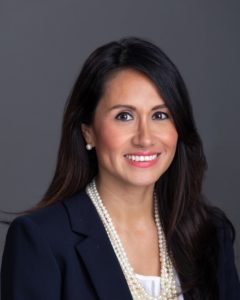
She attended the University of Houston and graduated with a degree in Communications. She became a member of HAVIN in 2018 serving as a board member representing the Foundation Fighting Blindness Houston Chapter and has served as the HAVIN Treasurer since 2020.
Also the Miss Blind Diva 2021-2022 winner, Naomi represents women from the visually impaired and blind community across the nation. In addition, Naomi is a recurring host with Beyond Our Sight, an immersive and adaptive program, guiding audiences through an unsighted experience now available as a team building experience with TeamBonding as Sight Unseen.
Get more human resources and leadership advice.
Less drama? Greater teamwork and job satisfaction? TeamBonding is here to help you build a stronger and happier team. Subscribe to get our team building podcast and thought leadership blogs sent straight to your inbox.
